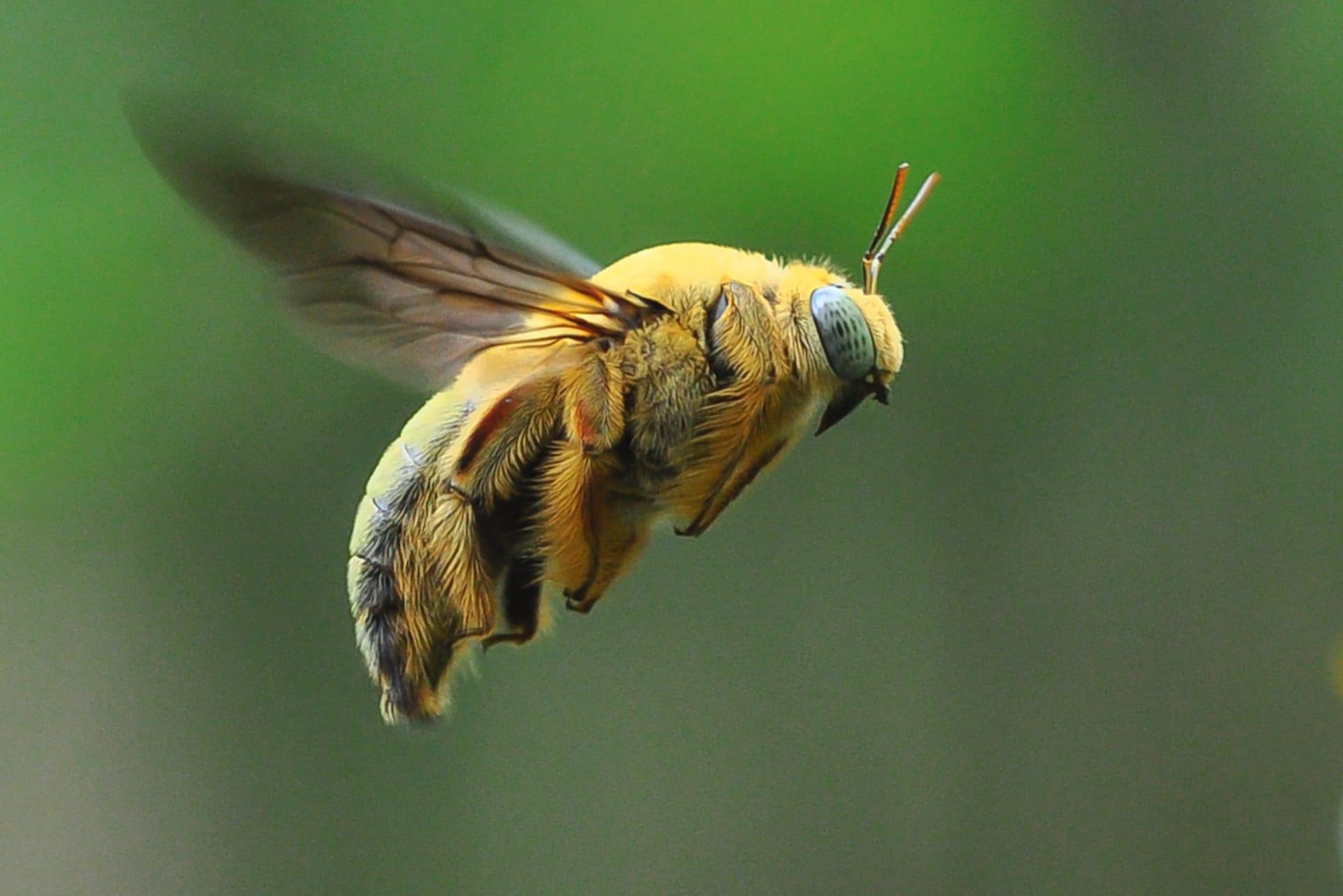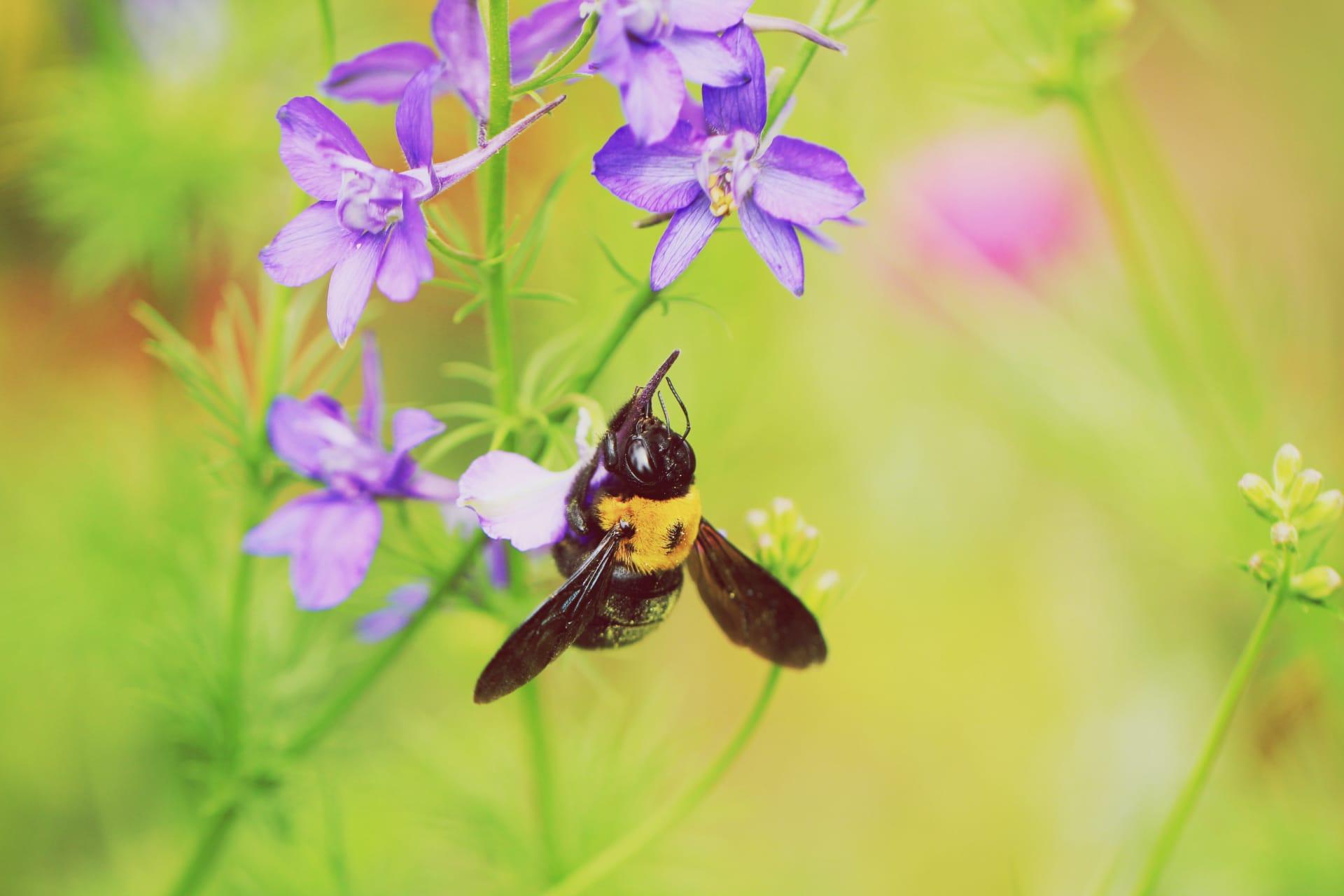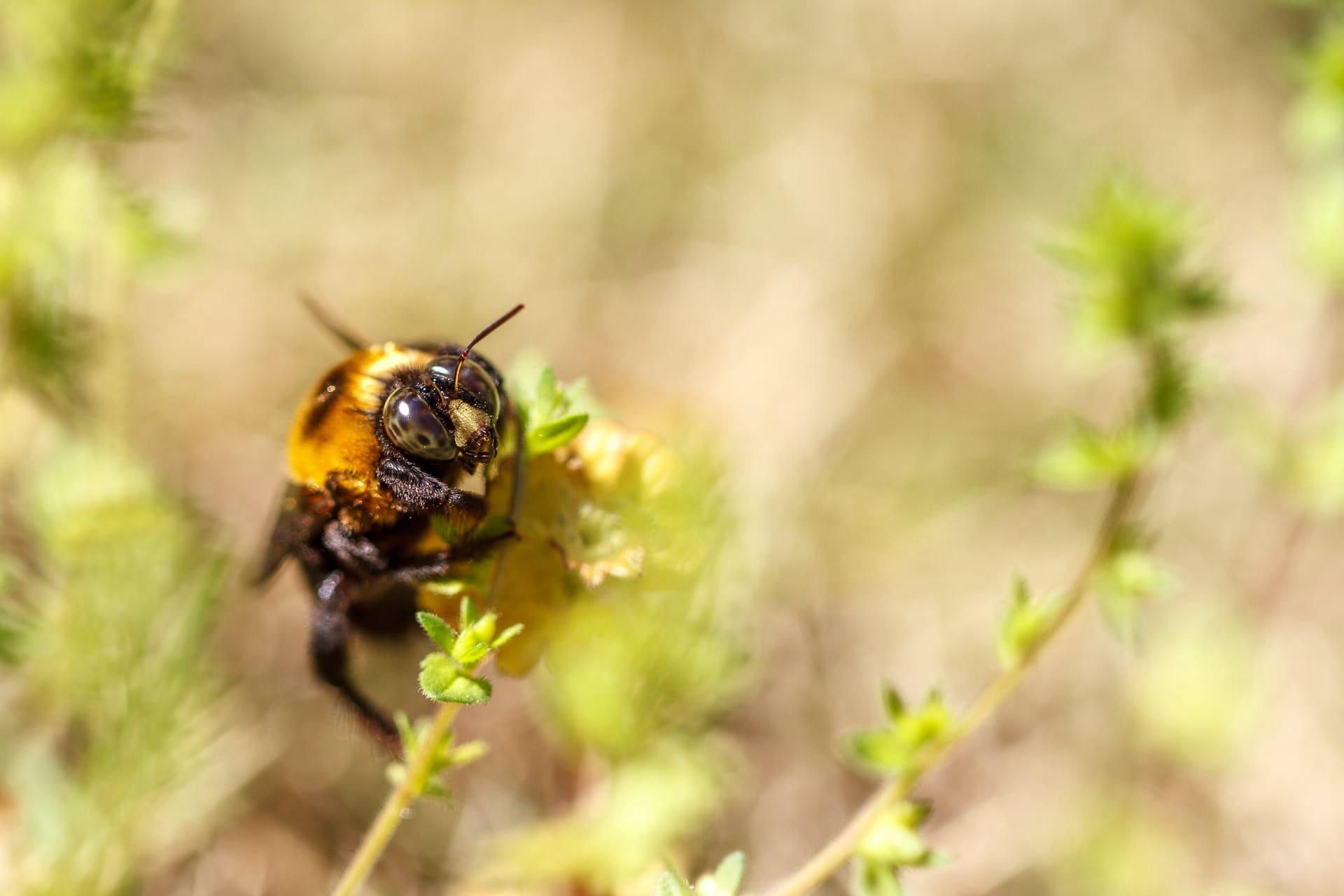Carpenter Bee
- Home /
- Mini Encyclopedia /
- Animal /
- Carpenter Bee
1
Carpenter bees, scientifically known as the genus Xylocopa, are a group of bee species known for their unique ability to bore into wood. There are over 500 species in this genus, which are part of the family Apidae, the same family as honeybees and bumblebees. Distinguished by their robust bodies, which can measure up to 1 inch in length, these bees have a predominantly black coloration with varying degrees of yellow and white hair depending on the species. Their powerful mandibles are adept at excavating wood, a feature that sets them apart from other bee species.
Carpenter bees have a global distribution, thriving in diverse environments across continents. They are predominantly found in temperate to tropical climates, with a high concentration in the United States, particularly in the southern and eastern regions. In these areas, carpenter bees are a common sight, especially in spring and early summer. They favor environments with abundant wooden structures or vegetation, as these provide ideal conditions for nesting and feeding. Their presence is noted from gardens and forested areas to urban settings where wooden buildings and structures are common.

2
Question: Are carpenter bees destructive to wood structures?
Answer: While it's true that carpenter bees bore into wood, their impact on structures is often exaggerated. Each female bee typically excavates a single nest in her lifetime, creating a tunnel only about half an inch wide and several inches deep. These bees prefer untreated, weathered wood, commonly found in eaves, decks, and outdoor furniture. Although their nesting habits can cause cosmetic damage, it's rare for them to cause structural damage to healthy, well-maintained wood. Preventative measures like painting or treating wood can effectively deter them from nesting, making their presence more of a nuisance than a destructive force.

3
Carpenter bees have a unique survival strategy centered around their nesting behavior. Females excavate nests in wood, creating intricate tunnels where they lay eggs and store food. These tunnels, often reused and expanded by successive generations, provide a safe environment for their offspring. The bees collect pollen and nectar, which they store in these tunnels as food for their larvae. The male carpenter bees, although aggressive in demeanor, do not possess stingers, but their territorial behavior serves as a deterrent to predators, protecting the nest.
Another aspect of their survival strategy is their pollination role. As they move from flower to flower collecting nectar, they inadvertently transfer pollen. Unlike honeybees, carpenter bees are solitary creatures, meaning each female is responsible for her own nest. This solitary nature reduces the risk of disease transmission and parasite infestation, common issues in more social bee species. Their robust body and ability to 'buzz pollinate' make them particularly effective at pollinating certain types of flowers, a critical role in many ecosystems.

4
In the ecosystem, carpenter bees play a dual role as both pollinators and part of the food web. As pollinators, they are crucial in the reproduction of many flowering plants, contributing to the diversity and health of ecosystems. Their ability to 'buzz pollinate' is especially important for certain crops and wild plants, making them an essential component in agricultural and natural environments. The presence of carpenter bees can be an indicator of the health of an ecosystem, as they require a diverse range of flowers to thrive.
From a food web perspective, carpenter bees serve as prey for various birds and insect predators. Their larvae, in particular, are sought after by woodpeckers and other bird species. This predator-prey relationship contributes to the balance of ecosystems, where carpenter bees play a part in supporting biodiversity. Moreover, their nesting habits, although sometimes seen as destructive, can create habitats for other insects and small animals, further contributing to ecological diversity.

5
Film: "Wings of Life" (2011, United States) - This Disney Nature documentary, narrated by Meryl Streep, delves into the world of bees, butterflies, birds, and bats. It includes stunning footage of carpenter bees, highlighting their role in pollination and their unique behaviors. The film emphasizes the ecological importance of these creatures, presenting a visually captivating and informative narrative on the interdependence between flora and fauna.
Book: "Bees: An Identification and Native Plant Forage Guide" (United States, 2017) by Heather Holm - This book provides an in-depth look into the world of bees, including carpenter bees. Holm offers insights into the identification, habitats, and foraging behaviors of various bee species, emphasizing their relationship with native plants. The book serves as a guide for gardeners, naturalists, and anyone interested in understanding and supporting these essential pollinators.
Book: "The Bee-Friendly Garden" (United States, 2016) by Kate Frey and Gretchen LeBuhn. This book is a practical guide to creating a garden that supports bees, including carpenter bees. It covers the basics of bee biology and behavior, with a focus on designing and planting a bee-friendly garden. The authors provide valuable advice on plant selection, garden maintenance, and creating habitats that attract and sustain various bee species, highlighting the importance of bees in our ecosystems.